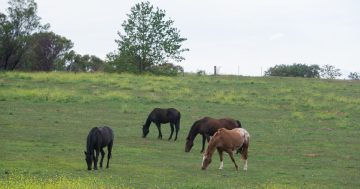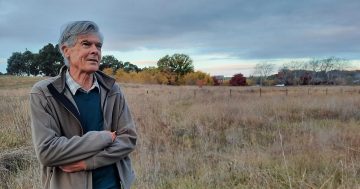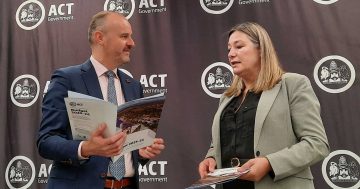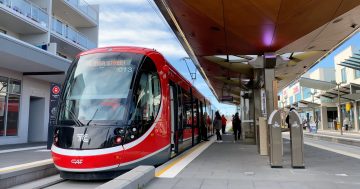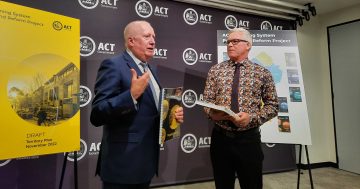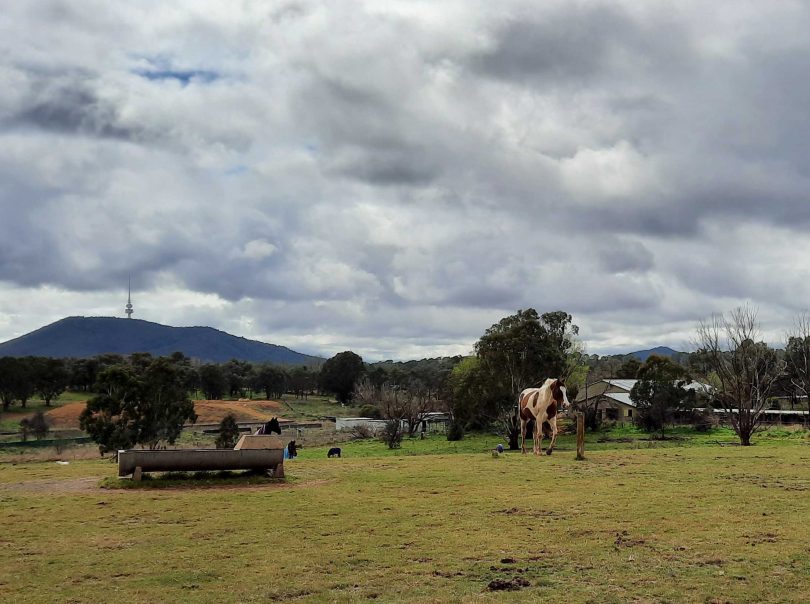
Yarralumla horse paddocks are under threat from development. Photo: Ian Bushnell.
A few weeks ago, fellow columnist Ian Bushnell wrote about the proposed residential/aged care development on Cotter Road that will likely impact the neighbouring Territory Agistment horse paddocks.
As Ian wrote, Canberra is a growing city, and spaces like horse paddocks (or golf courses, parks, informal nature strips and reserves) that take prime real estate may soon be conceded to more residential developments.
There’s logic in this, if all we’re talking about is housing. But these types of recreational spaces in Canberra are about so much more than land – they’re inherently linked to the culture of this city and how we value and preserve it.
I’ll admit, I have a vested interest – I’m a horsey person (I own two mares of my own, am very connected to the local horsey community, and run a small equestrian business). I know many people who agist in government paddocks, and it can’t be understated how important these facilities are to the local community.
It’s not just about an affordable place to keep a horse. They are sites of genuine community building – each agistment site has its own culture and atmosphere, and dedicated volunteers who work together to maintain the land and facilities and keep the space fit for purpose and safe for everyone who uses them. They are genuinely by and for the community, and have helped so many individuals nurture their love of their sport and their animals.
Similarly, my partner is a runner and he is so grateful for the numerous nature trails, reserves, and the hidden bits of bush he can explore in our inner north neighbourhood, which have provided him with a much-needed reprieve from the home office during lockdown, as I know they have for so many other Canberrans.
Add to these examples the many green spaces that serve small cohorts in the community, but are also invaluable – golf courses that take up swathes of land, but also provide much-needed breaks in our landscape to help prevent urban ‘heat islands’ from forming; neighbourhood parks and sports ovals that are located in prime spots next to local shops or on main streets; the much-loved nature strip at the Watson powerlines where many neighbours and I walk our dogs every day.
These spaces are symbolic of one of the key characteristics of Canberra that makes so many of us love living here, and that’s the integration of our homes and amenities with nature and outdoor recreation. Unlike other capital cities that dwarf us in size, we have the benefits of city-like infrastructure without the horror of big-city landscapes, defined as they are by glass, concrete and steel, and devoid as they can be of wide, open space.
It might seem like a logical solution for the government or town planners to see available space (ie, space without buildings on it) as ripe for the plucking to build on. But that logic only stands if the sole definition of value is land prices and not the wellbeing and cultural benefits that these spaces provide.
Yes, Canberra is growing, and yes, we have an issue with our housing market, both in terms of property prices and supply of affordable or social housing. But the solution to this problem can’t be to the detriment of the places in our city that define why so many of us love to call Canberra home.












